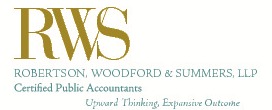The number of Americans volunteering has declined over the past 15 years, but our volunteers are giving more of their time. The Chronicle of Philanthropy reported on a University of Maryland study of Volunteering (11/2018) that “The share of American volunteering has been on the decline for 15 years, hitting a low of 24.9 percent in 2015, the most recent year studied. Those who do volunteer are giving more of their time. Community organizations received records highs in total volunteer hours served.”
Although we don’t have data on numbers of Nevada County volunteers or their hours, we know intuitively how important our volunteers are to our success. But are we doing enough to recruit, train, motivate, support and celebrate our volunteers? How often do our board members (volunteers themselves!) talk about volunteer support?
An informal survey of 20 Nevada County volunteers varying in ages from 38-88 yielded some interesting findings about these individuals, chief of which is that they are a modest group; no one in the survey was willing to go on record with their perception data.
Several respondents wrote about the importance of good governance in nonprofit organizations. Good governance enhances “confidence” in voluntary and nonprofit organizations and increases public participation in them – which is especially important as governments at all levels are able to do less in enhancing community social, cultural and environmental life. Our survey consisted of the following:
What benefits do our Nevada County volunteers reap from their volunteer work?
HelpGuide.org (Harvard Medical School Newsletter) identified the following perceived benefits of volunteering. The Nevada County sample was asked to order them by their perceived importance as a benefit of volunteering. (10= highest priority 1=lowest) The numbers listed are an average of the responses from the sample.
- Brings fun and fulfillment to my life: Rating – 9.4
- Affords me new friends and contacts: Rating – 7.2
- Increases my social and relationship skills: Rating – 6.2
- Helps me stay physically healthy: Rating – 6.3
- Increases my self-confidence: Rating – 6
- Provides career experiences: Rating – 4.25
- Teaches me valuable job skills: Rating – 5
- Combats depression: Rating – 2.3
On what basis do a sample of Nevada County volunteers select an organization to support with their time/resources?
Nevada County respondents were also asked “As a volunteer in one or more organizations, how did you find the right organizational “fit” for you? (10= highest priority 1=lowest)
All respondents gave scores of 8, 9 or 10 to the following responses about choice of volunteer organizations based on “fit”.
- Issue I care about
- Makes the community a better place
- Helps me meet new people
- Makes me feel better as a person
Four of the respondents reported organizational selection as a volunteer because:
- Taps into my current knowledge and skills
- Helps me build new knowledge and skills
How do our CNL nonprofits support their volunteers?
A couple of examples serve as vignettes for CNL Members’ organizational work with volunteers.
The Friendship Club (TFC) has about 230 volunteers in their database, of which 150 are considered “active”, meaning they have volunteered one or more times a year. Volunteers for TFC are screened and selected for specific skillsets based upon the tasks they will be asked to assume with the clients. TFC staff pre-assess prospective volunteers to ensure that the volunteer is a ‘good fit’ for the tasks each will be assigned. In the course of an ongoing relationship with a volunteer, TFC offers one-on-one coaching that serves not only as an encouragement for the volunteer to continue with TFC, but the coaching also helps the volunteer grow in her/his role.
Cindy, the TFC Community Engagement Manager, was asked what insights she has about working with volunteers. She said: “It should be very visible to your volunteers that whoever is overseeing the volunteers (whether that is a volunteer manager or another coordinator) is experienced in every task they assign to the new volunteers. The supervisor or coordinator should work along-side volunteers to incentivize quality results.”
Julie Hardin, Executive Director of InConcert Sierra, also responded to our inquiry about using volunteers– demonstrating a real commitment to CNL, given the kind of work InConcert Sierra is doing in December!
InConcert Sierra has about 184 volunteers, who are recruited primarily through surveys. The organization has an annual volunteer orientation and conducts training of volunteers as needed throughout the year.
Julie said: “Volunteers are our lifeline; we couldn’t do what we do without their assistance. We try to treat them as staff would want to be treated. We recommend that any organization using volunteers, check in with the volunteers to be sure they feel fulfilled in their position, as well as fulfilling the needs of the volunteer position. Lastly, we can’t thank them enough!”
Both organizations were asked about board conversation about volunteer work.
The Friendship Club does not have a standing board item regarding Volunteer work, but considers volunteer contributions in all discussions of TFC’s mission. Cindy was quick add that: “Many of The Friendship Club Board members are also active volunteers. We are blessed to have such an actively engaged team of Board Members who are always willing to work along-side volunteers, staff and girls.”
Julie Hardin at InConcert Sierra was also asked: How often does your board talk about work with volunteers? She reported: “The board talks about volunteers frequently, but as our board is more of a fundraising board, they don’t work much with the volunteers. As Executive Director, I talk with the board members about thanking the volunteers and making them feel welcome and useful. I also talk to the board about NOT telling volunteers what to do. If there is an issue with a volunteer, seek the volunteer coordinator, or me. They are not to instruct or discipline volunteers (or staff for that matter!)”
One great resource that many nonprofits use for organizing volunteer work and tasks is signup.com/ Check it out the next time you need to set up jobs for your folks – there is a free version as wells as premium upgrades available.


 January 29, 2020: Every Day Giving – The Way You Make a Difference
January 29, 2020: Every Day Giving – The Way You Make a Difference This twice annual training looks to strengthen the skills of all those serving as nonprofit board members. It is a great opportunity to understand the role of a nonprofit board and its member duties and responsibilities, as well as meet and connect with other directors. Led by CNL’s Wendy Willoughby and CA Habitat for Humanity’s Executive Director, Debbie Arakel, the training takes place in the evening to accommodate working attendees. Participants will come away knowing the 10 essential functions charged to those serving on nonprofit boards. You will learn how to be a role model and adopt the attributes of a strong, effective director. And finally, leave prepared to do the rewarding work of a productive leadership team.
This twice annual training looks to strengthen the skills of all those serving as nonprofit board members. It is a great opportunity to understand the role of a nonprofit board and its member duties and responsibilities, as well as meet and connect with other directors. Led by CNL’s Wendy Willoughby and CA Habitat for Humanity’s Executive Director, Debbie Arakel, the training takes place in the evening to accommodate working attendees. Participants will come away knowing the 10 essential functions charged to those serving on nonprofit boards. You will learn how to be a role model and adopt the attributes of a strong, effective director. And finally, leave prepared to do the rewarding work of a productive leadership team. March 30, 2020 Executive Director (ED) Huddle: The Huddles are a focused time for EDs to peer share around a specific topic, often featuring a special guest from the community. In 2020, they will occur on the fifth Mondays in March, June, August and November. These gatherings also offer the opportunity to network over appetizers and wine! EDs receive an invitation with details each month a Huddle takes place.
March 30, 2020 Executive Director (ED) Huddle: The Huddles are a focused time for EDs to peer share around a specific topic, often featuring a special guest from the community. In 2020, they will occur on the fifth Mondays in March, June, August and November. These gatherings also offer the opportunity to network over appetizers and wine! EDs receive an invitation with details each month a Huddle takes place. play a vital role in building healthy communities by contributing to the economic and social stability, and well-being of its constituents.
play a vital role in building healthy communities by contributing to the economic and social stability, and well-being of its constituents. to a focus that includes and embraces impact and results.
to a focus that includes and embraces impact and results.






 Why is it that some fundraising programs do better than others when the organizations have the same basic plan? Whether your organization is just starting out or one that has never been terribly successful with your fundraising efforts, sometimes figuring first or next steps can be a hurdle.
Why is it that some fundraising programs do better than others when the organizations have the same basic plan? Whether your organization is just starting out or one that has never been terribly successful with your fundraising efforts, sometimes figuring first or next steps can be a hurdle. Director of Sierra Nevada Memorial Hospital Foundation, we’ll explore the fundamentals that need to be in place before you start or revive a struggling fundraising program.
Director of Sierra Nevada Memorial Hospital Foundation, we’ll explore the fundamentals that need to be in place before you start or revive a struggling fundraising program. Navigating the minefield of employment laws is becoming increasingly difficult when each passing year brings change and more change.
Navigating the minefield of employment laws is becoming increasingly difficult when each passing year brings change and more change. It is more critical than ever that you are armed with the information you need to protect your organization; join CNL at this session and make sure you are ‘in the know.’
It is more critical than ever that you are armed with the information you need to protect your organization; join CNL at this session and make sure you are ‘in the know.’